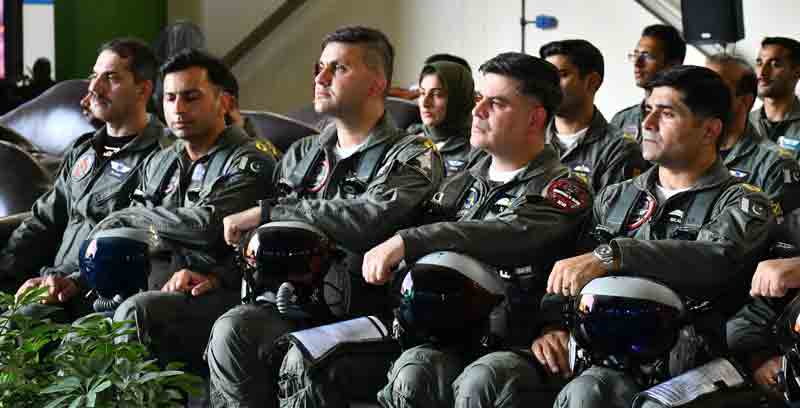In what is being described as a pivotal moment in contemporary aerial combat, a Pakistan Air Force (PAF) J-10C allegedly shot down an Indian Air Force (IAF) Rafale from an impressive distance of 182 kilometers using the Chinese-made PL-15 Beyond Visual Range (BVR) air-to-air missile, as reported by sources.
If confirmed, this claim would establish a new world record for the longest air-to-air missile kill in aviation history, generating considerable interest among military and strategic analysts, although independent verification of the precise distance is currently lacking.
Earlier reports had indicated that a Russian Su-35S fighter jet successfully downed a Ukrainian MiG-29 at a range of 213 kilometers using the long-range hypersonic R-37M air-to-air missile, which is believed to have a maximum engagement range of up to 400 kilometers.
The PL-15, developed by the China Airborne Missile Academy (CAMA) under the Aviation Industry Corporation of China (AVIC), is regarded as one of the most advanced BVR air-to-air missiles globally, competing with the American AIM-120D AMRAAM and the European MBDA METEOR in terms of range and electronic countermeasures capabilities.
The PAF’s J-10C, produced by Chengdu Aircraft Industry Corporation (CAIG), is a 4.5-generation multirole fighter that plays a vital role in Pakistan’s airpower modernization efforts, particularly aimed at countering India’s Rafale fleet. During the reported incident, the Pakistani J-10C is said to have operated entirely within Pakistan’s sovereign airspace while launching the PL-15 missile that successfully targeted the IAF Rafale across the Line of Control during the initial exchanges of the India-Pakistan aerial conflict.
In the early days of the conflict between the two nuclear-capable South Asian nations, defense analysts referred to it as ‘the largest air battle in modern history,’ with approximately 125 fighter jets from both air forces engaging in simultaneous combat missions. As reported by CNN, this extraordinary aerial confrontation took place while both Indian and Pakistani aircraft operated within their own airspace, utilizing beyond visual range (BVR) tactics instead of conventional close-range dogfights.
A Pakistani security source stated that ‘fighter aircraft from both sides engaged each other in airspace separated by up to 160 kilometers, with missiles being launched well beyond visual range.’ The engagements were characterized by long-range precision strikes, with both nations employing AESA (Active Electronically Scanned Array) radars, electronic warfare capabilities, and high-speed BVR missiles, focusing on radar locks and electronic signatures rather than visual identification.
Pakistan’s Foreign Minister Ishaq Dar revealed that during the initial phase of the conflict, PAF fighters faced a contingent of 75 to 80 Indian jets in what he termed ‘the largest aerial confrontation in recorded history.’ He added, ‘We successfully downed five of those Indian fighter aircraft,’. Previous reports indicated that Pakistani jets, including the J-10C and JF-17 ‘Thunder,’ were armed solely with the PL-15E, a downgraded export version of the missile with a maximum effective range of 140 kilometers.
If the reported engagement distance of 182 kilometers is accurate, it strongly indicates that China has covertly provided Pakistan with the full-range domestic variant of the PL-15 missile. This variant is believed to have a strike range of up to 300 kilometers and is typically reserved for the Chinese People’s Liberation Army Air Force (PLAAF). The domestic PL-15 is operationally integrated with advanced Chinese aircraft, including the stealthy fifth-generation J-20 ‘Mighty Dragon.’
However, recent reports suggest that the J-20 is starting to deploy an even more advanced air-to-air missile, the PL-17, which is thought to have an engagement range of up to 400 kilometers. The transfer of these sophisticated missiles to Pakistan seems to be part of Beijing’s strategic response to escalating tensions in the region, particularly following the recent conflict in Pahalgam, Jammu and Kashmir, which brought India and Pakistan close to war.
Just days ago, Foreign Minister Ishaq Dar confirmed that all five Indian Air Force aircraft downed by the Pakistan Air Force—three of which were Rafales—were engaged using the PL-15E missile from PAF J-10C fighters. Designed to reach speeds of Mach 4 and equipped with an AESA radar seeker, the PL-15 was specifically developed for beyond-visual-range (BVR) dominance, allowing its operator to strike first in contested airspace before the adversary can detect the launch platform.
Engineered for optimal lethality in the Beyond Visual Range (BVR) arena, the PL-15 equips both Chinese and now Pakistani aircraft with a vital strategic advantage, potentially altering the dynamics of air superiority in Asia. Numerous Western sources have supported Pakistan’s assertions, lending considerable credibility to its battlefield claims. Senior U.S. officials reportedly informed Reuters that ‘PAF J-10C fighters were responsible for downing at least two Indian Air Force jets,’ confirming the deployment of PL-15E missiles during the conflict.
It is reported that each of the five Indian aircraft was downed using PL-15E missiles, which have a maximum export range of 145 kilometers, although a record strike at 182 kilometers suggests otherwise. Jim Sciutto, CNN’s Chief National Security Correspondent, also verified through the social media platform X that French intelligence had confirmed the loss of at least one IAF Rafale during the engagement. If validated, this would represent the first operational loss of a Rafale fighter jet in any military conflict worldwide, undermining the aircraft’s previously impeccable combat record.
New: The US has assessed that Pakistani forces shot down an Indian jet during India’s air strikes on Pakistani territory, a senior US official with access to the latest assessments tells me. The US has still not confirmed what weapons system Pakistani forces utilized to take down… https://t.co/QCNVrDxSl5
— Jim Sciutto (@jimsciutto) May 8, 2025
Despite increasing visual and electronic evidence, the Indian government and military persist in denying the loss of five fighter jets, including three Rafales, to Pakistan’s air-to-air missile attacks. When asked about the status of the missing Rafales, Air Marshal A.K. Bharti of the Indian Air Force responded enigmatically, ‘We are in a wartime scenario; losses are part of combat,’ without providing further details. For defense analysts, this vague response seems to indirectly validate what official statements refuse to accept—that India indeed lost five combat aircraft, including its esteemed Rafales.
The Pakistan Air Force reported that two aircraft, a MiG-29 and a Su-30MKI, were allegedly shot down, both of which are integral to India’s primary air defense capabilities. The PAF’s J-10C fighters were first delivered on March 4, 2022, with the initial six units arriving at Minhas Airbase in Kamra. They were officially integrated into the No. 15 ‘Cobras’ Squadron on March 11, 2022. This acquisition was largely seen as a strategic counter to India’s introduction of the Rafale, indicating Pakistan’s aim to sustain strategic balance in South Asia.
The J-10C, classified as a 4.5-generation fighter, is outfitted with state-of-the-art AESA radar, sophisticated electronic warfare systems, and is compatible with long-range munitions like the PL-15, rendering it a significant asset in contemporary aerial warfare.
Pakistan initially revealed plans to procure 25 J-10C aircraft in December 2021, with deliveries aligned with the Republic Day festivities on March 23, 2022. Since then, the nation has broadened its J-10C fleet and is currently engaged in advanced negotiations to secure up to 60 aircraft in total, a development that will greatly enhance the PAF’s deterrent capabilities and long-range air dominance in light of the region’s swiftly changing security landscape.
Discover more from Defence Talks | Defense News Hub, Military Updates, Security Insights
Subscribe to get the latest posts sent to your email.





